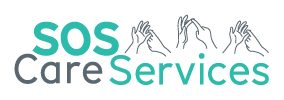Learning disability
A learning disability affects the way a person understands information and how they communicate. This means they can have difficulty:
- understanding new or complex information
- learning new skills
- coping independently
A learning disability can be mild, moderate, or severe. Some individuals with a mild learning disability can talk easily and look after themselves but may need a bit longer than usual to learn new skills. Other individuals may not be able to communicate at all and have other disabilities as well. Some adults with a learning disability are able to live independently, while others need help with everyday tasks, such as washing and dressing, for their whole lives. It depends on the person’s abilities and the level of care and support they receive. Children and young people with a learning disability may also have special educational needs (SEN).
Profound Multiple Learning Disability
A profound and multiple learning disability (PMLD) is when a person has a severe learning disability and other disabilities that significantly affect their ability to communicate and be independent. Someone with PMLD may have severe difficulties seeing, hearing, speaking and moving. They may have complex health and social care needs due to these or other conditions. People with PMLD need a carer or carers to help them with most areas of everyday life, such as eating, washing, and going to the toilet. With support, many people can learn to communicate in different ways, be involved in decisions about themselves, do things they enjoy and achieve more independence.
Complex Needs
If your child has been diagnosed with an illness, disability or sensory impairment and needs a lot of additional support daily, they’re described as having “complex needs”. A child might have complex needs from birth, or after an illness or injury.
Epilepsy
Epilepsy is a common condition that affects the brain and causes frequent seizures.
Seizures are bursts of electrical activity in the brain that temporarily affect how it works. They can cause a wide range of symptoms.
Epilepsy can start at any age, but usually starts either in childhood or in people over 60.
It’s often lifelong but can sometimes get slowly better over time.
Autism
Autism is a spectrum. This means everybody with autism is different.
Some autistic people need little or no support. Others may need help from a parent or carer every day.
Autistic people may:
- find it hard to communicate and interact with other people
- find it hard to understand how other people think or feel
- find things like bright lights or loud noises overwhelming, stressful or uncomfortable
- get anxious or upset about unfamiliar situations and social events
- take longer to understand information
- do or think the same things over and over
Neurodiverse
BY NICK WALKER
Neurodiversity is the diversity of human brains and minds, the infinite variation in neurocognitive functioning within our species.
The Neurodiversity Paradigm is an emergent paradigm in which neurodiversity is understood to be a form of human diversity that is subject to the same social dynamics as other forms of diversity (including dynamics of power and oppression).
Neurodiversity is an essential form of human diversity. The idea that there is one “normal” or “healthy” type of brain or mind or one “right” style of neurocognitive functioning, is no more valid than the idea that there is one “normal” or “right” gender, race or culture.
The classification of neurodivergence (e.g. autism, ADHD, dyslexia, bipolarity) as medical/psychiatric pathology has no valid scientific basis , and instead reflects cultural prejudice and oppresses those labelled as such.
The social dynamics around neurodiversity are similar to the dynamics that manifest around other forms of human diversity. These dynamics include unequal distribution of social power; conversely, when embraced, diversity can act as a source of creative potential.
Brain Injury
Traumatic Brain Injury (TBI) is a disruption in the normal function of the brain that can be caused by a blow, bump or jolt to the head, the head suddenly and violently hitting an object or when an object pierces the skull and enters brain tissue.
Spinal injury
Spinal cord injuries may result from damage to the vertebrae, ligaments or disks of the spinal column or to the spinal cord itself. A traumatic spinal cord injury may stem from a sudden, traumatic blow to your spine that fractures, dislocates, crushes or compresses one or more of your vertebrae.
Disability
A disability is any condition of the body or mind (impairment) that makes it more difficult for the person with the condition to do certain activities (activity limitation) and interact with the world around them (participation restrictions).
Rare Genetic Conditions
1 in 17 people will be affected by a rare disease at some point in their lives. This amounts to 3.5 million people in the UK and 30 million people across Europe .
Most rare diseases currently have no effective treatment.
8 out of 10 rare diseases have a genetic cause and 99% of genetic conditions are classed as rare . Often rare diseases are chronic and life-threatening. Rare diseases can be single gene, multifactorial, chromosomal, or non-genetic.
On average, it takes over four years to receive an accurate diagnosis of a rare disease.
Rare diseases include rare cancers such as childhood cancers and some other well-known conditions, such as cystic fibrosis and Huntington’s disease.

